But don’t get too comfortable, Mr. Plate.
This was the Buzz in the nutrition world on Thursday morning. The USDA, at a 10:45 am press release, revealed the new look of the pyramid, which turned out to be a plate.
In 1992, the USDA released this black pyramid. It was criticized for several reasons, including recommending too many carbs and promoting the consumption of not-so-good-for-you carbs. I agree.
Learn how to identify the REAL causes of your gut problems.
In 2005, the USDA did a face lift for the pyramid and came up with this new colorful one. Still criticized for being confusing–what do the bands and strips mean anyways?–and requiring internet access that is not available for all.
And now, responding to the 2010 Dietary Guidelines, the Pyramid became a plate.
There are some good things to say about it. The plate is easier to relate to than a pyramid. We eat from plates, right? The names of the food groups are right there clear and simple. And it’s obvious that half of our plates should come from vegetables and fruits.
Few minutes later, thoughts started to trickle on why I don’t like the plate that much. I’m not usually a ranting person, at least not my blog, but this time, I’m going to give it a try.
- Who cares? Other than those who work in nutrition, no one cares. Pyramid or plate, the regular consumer doesn’t care. If it’s not fun or glamorous, it’s not going to capture anyone’s attention. Good luck seeing it in Us Weekly!
- Show us the fats! Why are we scaring people off from fat? Healthy fats need a corner on that plate, which sadly, wasn’t there.
- How big is the plate? How many plates should I eat a day? Where does a pizza fit? And what to do with snacks? Just some questions.
- I think as a nation, we’re smart enough to know what to eat. Our problem is not with the ‘what’ but with the ‘how.’ How do we make healthy foods taste good? How do we prepare them without too much time and effort? How can we afford healthier foods?
- Instead of spending so much money and time to come up with the plate, which is still confusing, why not spend money to support fruit and vegetable farmers? Or those who produce organic produce, grass-fed beef, hormone-free dairy, and eggs from free-roaming hens? Wouldn’t that solve the problem of healthy foods being too expensive? I’m not an expert in food politics, but it doesn’t make sense that most of our farms are dedicated to corn and soy…to feed cattle…which should feed on grass to begin with. A complicated food system can’t produce a simple MyPlate. Fix the root first.
- Since we obviously can’t come up with an icon that works for each and every one of us, why not help people see a dietitian? I know I’m going far but it’s all related. The need for a pyramid rose from the spread of chronic diseases such as diabetes and cardiovascular disease. And let’s not forget obesity that sets our bodies up for such diseases and others. We know that the right diet works, yet it’s very difficult to get insurance to pay for a session with a dietitian who can tailor nutrition for the individual. Instead, the system lets people get sick first, then reimburses numerous doctors visits, medications, surgeries, amputations, and a laundry list of preventable side effects.
I understand the need for some sort of guidelines for government programs, but this plate is not going to solve our obesity and other nutrition-related problems. Let’s see what comes next in 5 years.
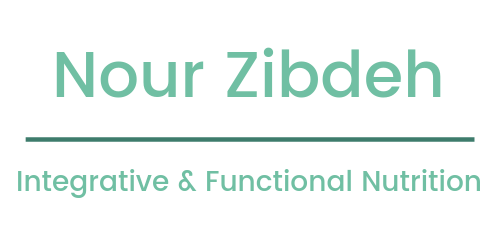
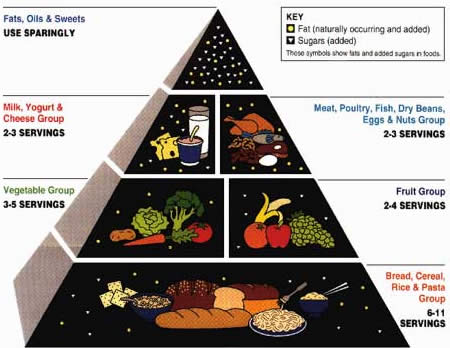
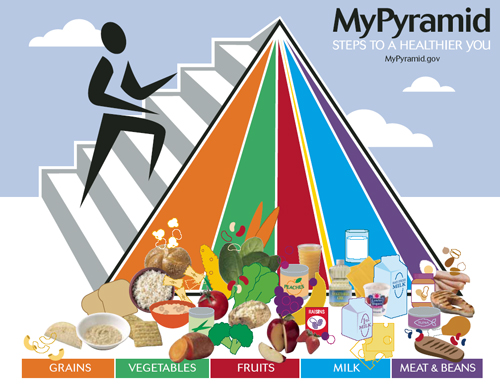
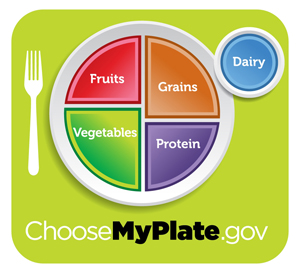
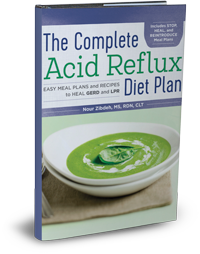
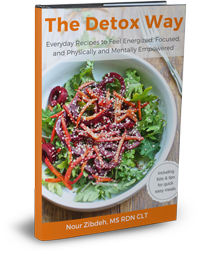


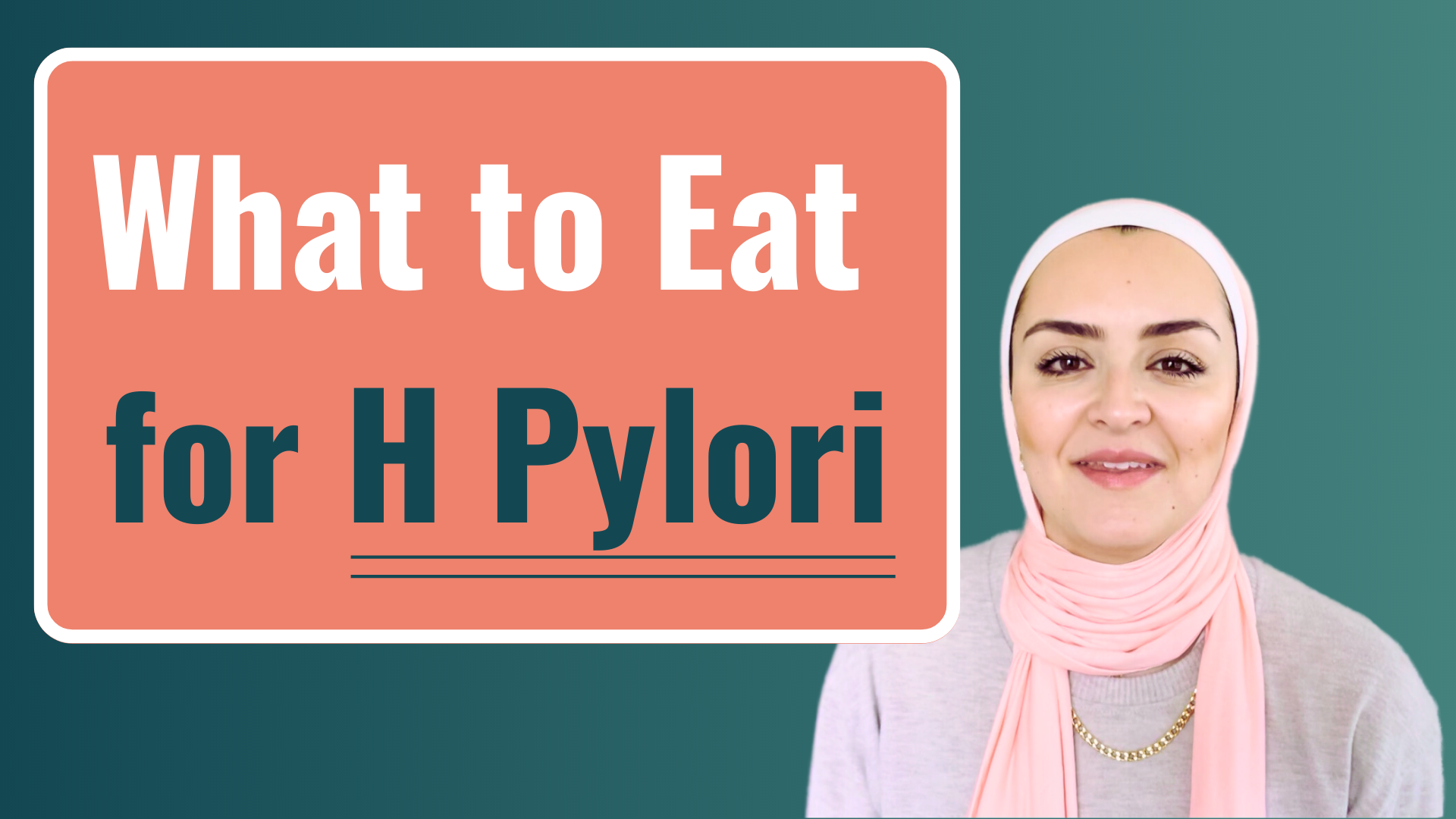
7 thoughts on “Bye Bye MyPyramid…Hello MyPlate”
Pingback: MyPyramid to MyPlate: New Food Icon is Unveiled In Washington, DC | Nutrition Unplugged
Yes! I agree. Mostly- what’s the point? Seriously, most americans didn’t follow the pyramid anyways- its just an icon they saw in their doctors office, health class, or possibly if they saw a RD. Sure, it’s a great tool to see what a “healthy” plate looks like, but most americans know that an apple is a better choice than cheetos. Let’s focus on getting those foods into food deserts, making them affordable, and teaching basic cooking skills. And while we’re at it, let’s make an unbiased plate. Sorry USDA, but maybe when you stop catering to agriculture subsidies and The Dairy Council I will take you more seriously.
Whew- didn’t realize I was getting on such a rant either 🙂 Just my two cents- Alex
Thanks Alex. I’m glad I’m not the only one who thinks like this!
I think “who cares” says it all. Well put. Glad to see you’re posting again. I’m going to read US Weekly.
Thanks Lauren! I’m doing my best to post frequently but not where I would like to be. Working on life /work/ fun/ kids/ me balance!
Hi Nour! So nice to connect with you 🙂 I love your take on the plate. That is exactly how I feel. Really who cares?? And why is dairy its own category? Shouldn’t it be “high calcium foods?” The plate does nothing to tell me how to eat healthy. I could fit a chocolate milk, cheeseburger, fries and ketchup on that plate.
So true. I love dairy but I think it’s confusing to have fruits, vegetables, grains, dairy, and protein. Isn’t dairy protein too? I wouldn’t want to be working with the USDA 🙂
Comments are closed.